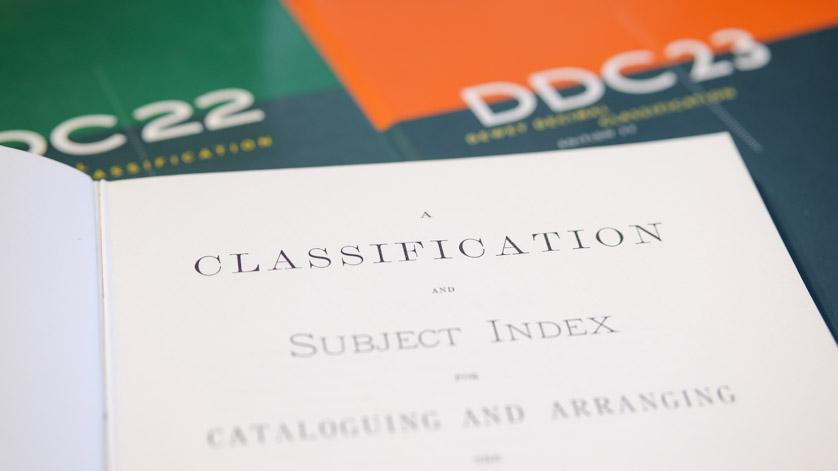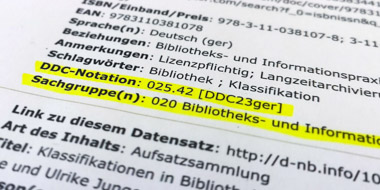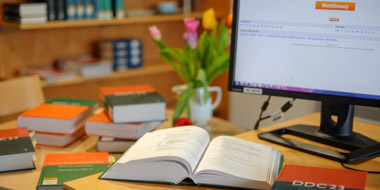What is DDC?

Overview of DDC
Dewey Decimal Classification, DDC for short, is a system for organising knowledge. In principle, it can be used to classify knowledge in any form, be it text, music, images or other knowledge resources, printed or digital.
Subjects are subdivided by means of classes. Each DDC class is represented by a notation (DDC number) and consists of a caption (class heading) and notes. It also contains one or more Relative Index entries that facilitate precise verbal access to the subjects in the class.
The numbers, which are made up of Arabic numerals 0 to 9, are structured hierarchically, thus making it possible to classify anything from very general categories to highly specific subjects. The first ten classes (main classes) are followed by 100 classes on the second hierarchical level, which are in turn followed by 1,000 classes on the third level etc.
If a DDC number is longer than three digits, the next digit is preceded by a decimal point (“Dewey dot”), a DDC characteristic that serves as a visual gap.
The DDC number-building instructions facilitate the addition of extra number components for specific subjects, e.g. for time or location, as in class 027.4430904 Public libraries—Germany—20th century, which consists of the following number components:
027.4 Public libraries
T2—43 Germany
T1—0904 20th century
How DDC content is organised
The DDC system is made up of the following components:
- Schedules: All classes from 000 to 999 containing the disciplines and subjects.
- Auxiliary tables: Standard subdivisions (auxiliary table 1) and five other auxiliary tables containing subdivisions for geographic areas, historical periods, literature, ethnic and national groups, and language.
- Relative Index: Known as the “DDC Register” in German, the Relative Index contains all subjects in alphabetical order, the distinguishing feature being that the subjects are linked with their disciplines.
- DDC manual: Explanations of items that are difficult to classify with reference to individual subjects or disciplines.
Brief explanations: DDC numbers
How can I recognise a DDC number?
A DDC number consists of at least three digits, e.g. 150 Psychology.
If the DDC number is longer than three digits, the next digit is preceded by a decimal point (“Dewey dot”), e.g. 004.678 Internet.
DDC numbers can easily be identified in the title records in the German National Library’s catalogue: they are listed in the title data under “DDC-Notation” (“DDC number” ).
What is the difference between a DDC Subject Category, a DDC Short Number and a full DDC number?
The approximately 100 DDC-Subject Categories represent a rough breakdown of subjects which is largely oriented on the second level of the DDC system. These are used to organise the Deutsche Nationalbibliografie (German National Bibliography).
DDC Short Numbers are specially selected abbreviated DDC numbers. They are longer than DDC Subject Category numbers but shorter than full DDC numbers. At the German National Library, they are used for machine-based classificatory cataloguing.
Full DDC numbers comprise all the numbers in a DDC edition including built numbers. They can be short or long and can therefore be used to classify both general and highly specific subjects.
There are also DDC numbers of the Abridged Edition. The DDC Abridged Edition is one of the original American versions of the DDC system. It can be used to assign shorter DDC numbers in smaller collections. The German National Library does not use the Abridged Edition.
Further information
(available only in German)
Last changes:
24.02.2021
Short-URL:
https://www.dnb.de/wasistdieddc
Contact:
h.alex@dnb.de




